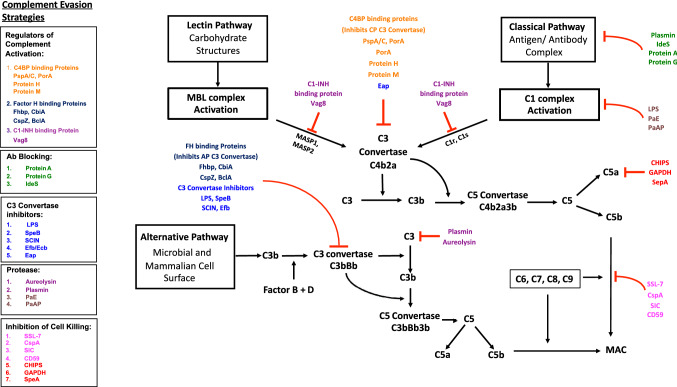Fig. 1.
Complement evasion strategies adopted by human pathogenic bacteria. Schematic representation of the cascades involved in the classical, alternative and lectin complement pathways have been depicted. The complement evasive strategies exhibited by the different pathogens are listed in the separate boxes that have been classified as per their mechanism of action. The effector molecules under a common complement evasion mechanism have been color-coded. Regulators of complement activation, C4 binding protein (C4BP) and Factor H targets C3 convertase. C1-Inhibitor (C1-INH) targets C1/Mannose binding lectin (MBL) associated proteases. IgG proteases and binding inhibitors (Plasmin, IdeS, Protein A and Protein G) block the activation of the classical pathway. Lipopolysaccharide (LPS), Staphylococcal complement inhibitor (SCIN), Streptococcus pyogenes exotoxin B (SpeB), Extracellular fibrinogen binding protein (Efb) inhibit C3 convertase of the alternative pathway. Pathogenic proteases (Aureolysin, Plasmin) degrade human C3 and host Plasmin degrades IgG. Chemotaxis inhibitory protein (CHIPS) and Glyceraldehyde 3-phosphate dehydrogenase (GAPDH) degrade the anaphylatoxin molecule C5a. Staphylococcal super antigen like-7 protein (SSL-7), Complement regulator-acquiring surface protein (CspA), Streptococcal inhibitor of complement (SIC) and GPI-Anchored protectin (CD59) inhibit the formation of the membrane attack complex (MAC)

